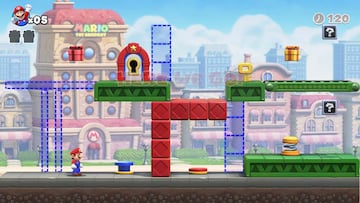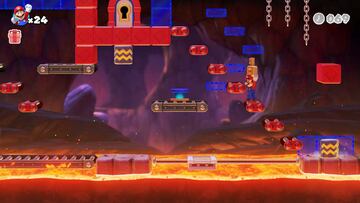Nintendo
Mario vs. Donkey Kong: The Eternal Rivalry stays fresh
One of the GameBoy Advance classics is back to prove that well-executed mechanics can be kept alive for 20 years.
Mixing genres in video games is not an easy task, as it requires a real understanding of them. In video games, puzzles can implement mechanics as simple as they are complicated, knowing that they can be easy to learn and difficult to master experiences. The same goes for the platform genre. However, Nintendo has not only revived one of the oldest rivalries in video games but also an example that shows that they had already managed to mix the two genres more than 20 years ago. On this occasion, we take a look at Mario vs. Donkey Kong.
The eternal rivalry between Mario and Donkey Kong
Mario vs. Donkey Kong is a puzzle game for Nintendo Switch where we control Mario as he chases Donkey Kong through several levels, avoiding obstacles and trying to recover some stolen toys. This is a remake of the Gameboy Advance game that was released 20 years ago. In turn, this was a spiritual sequel to Donkey Kong, released 10 years prior on the GameBoy, which expanded the original arcade game with puzzles and mechanics for the Nintendo handheld. But maybe we’ve gone too far back in time.
The game’s story begins when Donkey Kong, bored in his jungle hut, becomes interested in Mario’s little toys. Unable to find them in town, he does what any fan would do and goes straight to the factory to get his toys by force. Thus begins the adventure of Mario trying to retrieve the stolen goods through several levels that, as you can imagine, follow the common theme of places Mario and company might go: from the very same toy factory, to a jungle, to the top of a frozen mountain, through a carnival, and more.

The goal of each level is simple: retrieve Mario’s mechanical toy and 3 gifts that will challenge any completionist. However, this is easier said than done. While the Mario mechanics of jumping, crouching, and carrying objects remain the same, it is important to understand the rules that exist in each area. From switches that make elements of the level appear or disappear, to the movements of certain enemies, some of the items you find, or even Mario’s movements, the mechanics feel almost natural after a while. Of course, there will be times when the player will need to pay more attention to the level design and a little agility to solve it.
Each world has 6 levels in total. When we unlock them, we have to go through a special puzzle where we have to use the Mini Marios to get the word TOY and put them in their box. Once this is done, we will end up facing Donkey Kong at a level where the skills we have learned are put to use. If you think the game is too short, there is a second round that increases the difficulty of the game, as well as other surprises for you to discover.

20 years on and as fresh as ever
Mario vs. Donkey Kong is a major redesign of the original GameBoy Advance title. In terms of controls, the leap from the D-pad to a stick is something that is appreciated, feeling a greater agility to control the plumber.
The effort to bring this title 20 years later is a work of reimagining that takes great advantage of the resources of the Nintendo Switch. Seeing these levels in 2.5D style, with reworked music and even new scenarios, shows how much effort Nintendo has put into bringing this classic back to life. There are moments when the shadow effects of certain levels look so impressive that you wonder why they were not always used to add more depth to the game.
In addition, this installment of Mario vs. Donkey Kong offers new elements compared to the original. We can expect 2 new worlds that will add a new set of challenges for the player. We also have new quality-of-life elements, such as two options in terms of difficulty, with a “relaxed” option, as well as the option to play with someone else in cooperative mode. In this option, player 2 will take control of Toad and be able to help Mario.

Mario vs. Donkey Kong is a remake that knows that the mechanics implemented 20 years ago are still memorable and have managed to stand the test of time. The mix of puzzle and platforming is a combination that fits like a glove, and the improved controls make it all the better. Even on a second playthrough, the game can feel a bit short, but it delivers enough elements to make it an extremely accessible title. Let’s just hope we don’t have to wait another 2 decades for a new installment.